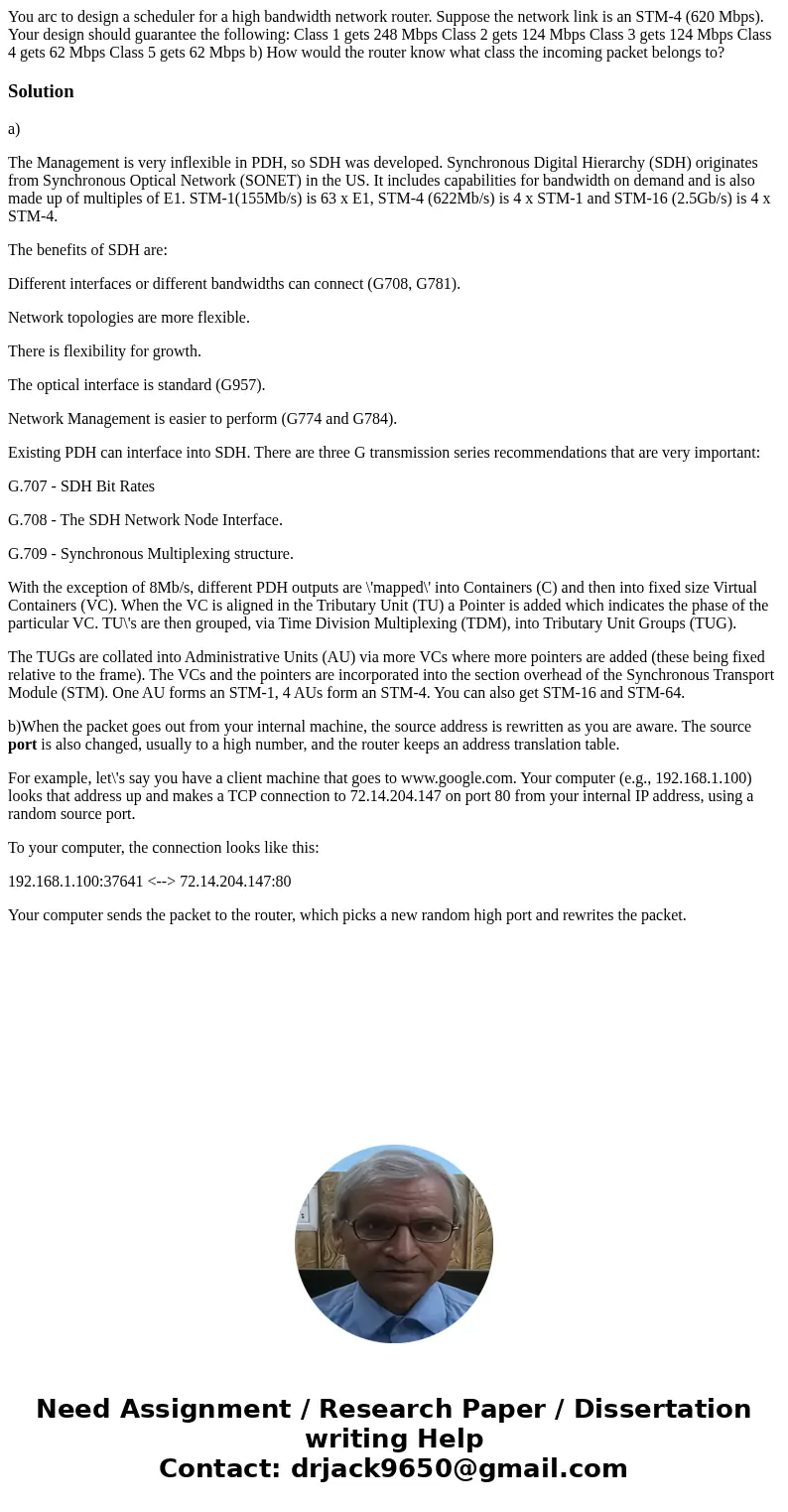You arc to design a scheduler for a high bandwidth network r
Solution
a)
The Management is very inflexible in PDH, so SDH was developed. Synchronous Digital Hierarchy (SDH) originates from Synchronous Optical Network (SONET) in the US. It includes capabilities for bandwidth on demand and is also made up of multiples of E1. STM-1(155Mb/s) is 63 x E1, STM-4 (622Mb/s) is 4 x STM-1 and STM-16 (2.5Gb/s) is 4 x STM-4.
The benefits of SDH are:
Different interfaces or different bandwidths can connect (G708, G781).
Network topologies are more flexible.
There is flexibility for growth.
The optical interface is standard (G957).
Network Management is easier to perform (G774 and G784).
Existing PDH can interface into SDH. There are three G transmission series recommendations that are very important:
G.707 - SDH Bit Rates
G.708 - The SDH Network Node Interface.
G.709 - Synchronous Multiplexing structure.
With the exception of 8Mb/s, different PDH outputs are \'mapped\' into Containers (C) and then into fixed size Virtual Containers (VC). When the VC is aligned in the Tributary Unit (TU) a Pointer is added which indicates the phase of the particular VC. TU\'s are then grouped, via Time Division Multiplexing (TDM), into Tributary Unit Groups (TUG).
The TUGs are collated into Administrative Units (AU) via more VCs where more pointers are added (these being fixed relative to the frame). The VCs and the pointers are incorporated into the section overhead of the Synchronous Transport Module (STM). One AU forms an STM-1, 4 AUs form an STM-4. You can also get STM-16 and STM-64.
b)When the packet goes out from your internal machine, the source address is rewritten as you are aware. The source port is also changed, usually to a high number, and the router keeps an address translation table.
For example, let\'s say you have a client machine that goes to www.google.com. Your computer (e.g., 192.168.1.100) looks that address up and makes a TCP connection to 72.14.204.147 on port 80 from your internal IP address, using a random source port.
To your computer, the connection looks like this:
192.168.1.100:37641 <--> 72.14.204.147:80
Your computer sends the packet to the router, which picks a new random high port and rewrites the packet.

 Homework Sourse
Homework Sourse